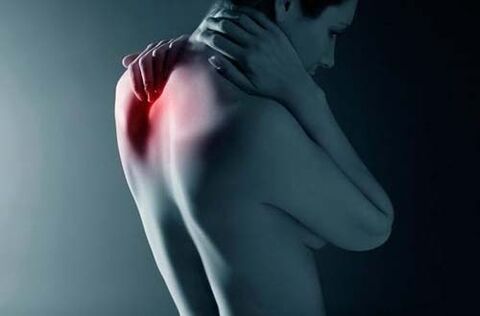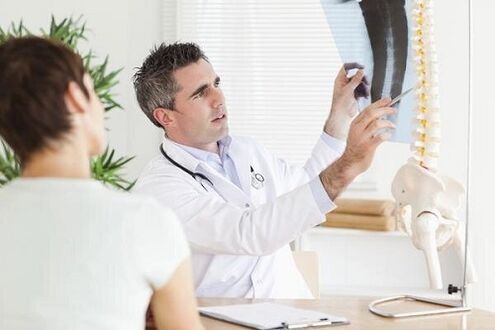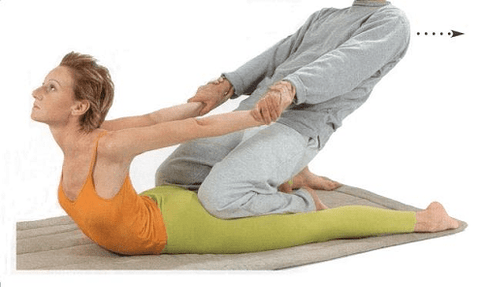What doctors call osteochondrosis of the thoracic spine refers to the corresponding degenerative dystrophic process in this area, which leads to pathological deformation of cartilage and bone tissue and destruction of ligaments, joints and intervertebral discs.
Reason for occurrence

The thoracic spine is less mobile than the cervical and lumbar spine, so pathological processes in this area appear less obvious, mainly due to the solid design of the ribs, sternum and vertebrae connection.However, it occurs no less frequently than other types of osteochondrosis.Most people who spend a lot of time sitting at home or at work are prone to developing spinal muscle weakness, scoliosis, injuries to the area, poor posture, leading to thoracic osteochondrosis.
As mentioned above, the main cause of the disease is considered to be pathological deformation of the intervertebral disc and joint structures.The cartilage surface is destroyed, the intervertebral disc becomes thinner, osteophytes, herniations, and hernias form, the nucleus pulposus is significantly reduced, and ultimately the spinal nerve root structure is damaged, resulting in compressive myelopathy and vascular spinal cord ischemia.
Symptoms and first signs of thoracic osteochondrosis
The symptoms of osteochondrosis are not as obvious as those of other types of disease, and unqualified doctors sometimes confuse them with symptoms of other conditions.The above problems can cause pain in the thoracic spine and interscapular area, which is significantly worse with movement and physical exertion.Compressed nerve fibers can cause uncomfortable conductive sensations in the heart and even the liver, as well as impairments in the function of many other organs.
There are two types of pain associated with osteochondrosis of the chest.
- Back pain is a syndrome of long-term moderate pain in the affected area, accompanied by an unpleasant sensation.
- Back - Paroxysmal, severe pain, severe and usually short-lived.In this case, the patient may have difficulty breathing and the ability to move in the affected area.
Common symptoms
- There is pain in the interscapular area.They are accompanied by "shooting" of the intercostal nerves in the affected area and corresponding neuralgia.
- Left sided chest pain syndrome, similar to ischemia.
- Chest girdle pain that gets significantly worse with high physical activity.
- Limited chest movement/mobility.This symptom is characteristic of thoracic osteochondrosis and is often confused with scoliosis and manifestations of ankylosing spondylitis/Forestier/Scheerman-Mao disease.
- "Relieves" pain in the gastrointestinal tract, heart and liver.
- Sexual dysfunction.
- Partial numbness in the chest.
Treatment of thoracic osteochondrosis
Osteochondrosis of the thoracic spine can only be treated with complex long-term therapy, which includes a series of exercises, various physical and manual therapies, and medications.
How to treat?

The treatment process consists of several stages.The first is to eliminate painful symptoms.In addition to this, restorative and preventive therapies are used, which include a variety of techniques and methods from acupuncture to physiotherapy.The final stage is maintenance treatment.The duration of treatment for the disease varies widely and depends on the medical technology used, the patient's current condition, and the stage of osteochondrosis itself.
Popular Drugs for Treating Thoracic Osteochondrosis
- Painkillers.Based on various combinations of NSAIDs and analgesics.
- Hodro Protectant.Must catalyze the repair process of damaged cartilage.
- vitamins.In most cases, doctors prescribe a complete vitamin complex or a preparation containing B elements.
- external means.Corticosteroid-based creams or ointments.Additionally, topical medications may be used to relieve inflammation in the affected area and reduce symptoms of the disease.
- Injections and injections.Most often, they are performed in a hospital setting and are a combination of a paravertebral block and a long-acting anesthetic.In addition, such drugs can improve blood circulation and also promote the recovery of cartilage tissue.
massage
Massage not only reduces the severity of disease symptoms, but also helps people recover, having a positive effect on other elements of the complex therapy.It is prescribed individually based on the clinical manifestations of thoracic osteochondrosis, the presence of chronic diseases and contraindications.
Manual therapy relieves pain syndromes of various causes, prevents spinal atrophy, normalizes blood circulation and nutrition in the intervertebral discs, relaxes static muscles in the affected area and triggers the natural process of regeneration of cartilage tissue.

Main types of massage for thoracic osteochondrosis:
- Spot goods.
- Medicinal.
- Hardware canned.
- Reflex-prostate.
- Connective tissue.
Gymnastics and sports therapy
Therapeutic physical training and gymnastic exercises are one of the most important stages of spinal recovery after osteochondrosis.Of course, it should be prescribed by a purely professional doctor based on the stage of the disease and the patient's condition.
The basic tasks of kinesiology/gymnastics are the systematic development of cartilage and the strengthening of spinal muscles.With appropriate diagnosis, the author usually prescribes a set of exercises: this system includes general strengthening routines and methods for direct impact on the most problematic areas, as well as index exercises that allow easy tracking of treatment effects.
In private clinics, they also perform different exercises using different methods and special equipment.Treatment stages for this case:
- Relieves cramping and fighting sensations.
- Therapeutic loading of short dorsal muscles.
- Disc circulation normalizes.
- Restore the basic structure of the spine.
Physical therapy and alternative therapies

This approach to treating thoracic osteochondrosis may include hardware and alternative therapies, as well as various physical procedures.The most famous and popular methods:
- Electrophoresis.This is a well-known non-surgical method of affecting the spine that has been used since the 1970s.
- Direct stretch.Of course, when performed by a qualified expert, this method is a relatively safe and effective way to straighten the spine.It is performed on a massage traction table.
- Vacuum therapy.A type that uses a vacuum tank to have a positive effect on the affected area.
- acupuncture.Classic acupuncture is performed with special thin needles that penetrate to a certain depth into the epithelium of acupuncture points on the back.
- Laser puncture.An activity similar to acupuncture, but performed using a laser beam.
- Magnetic puncture.Effects of alternating magnetic fields on problem areas.
- Osteopathy.A complex approach that includes elements of massage, chiropractic and orthopedic techniques.
- Electrical stimulation.Electrical current is used to normalize spinal function.
- Shock wave therapy.The technology is based on the use of infrasound waves to treat osteochondrosis of the thoracic spine.
- Traction machine decompression.Automated simulation of direct stretching.
prevention
The rules for preventing this disease are simple and clear:
- Exercise regularly under the supervision of an orthopedic surgeon.
- Weight normalization.
- Eat foods and medications rich in magnesium and calcium.
- Correct posture when working while seated.
- Quit bad habits.
Q&A
What kind of pain does thoracic osteochondrosis cause?
With this type of osteochondrosis, patients experience two types of pain syndromes.
- Back pain is a severe, short-term, high-intensity pain that periodically manifests itself as reduced motor activity and difficulty breathing in the affected area.
- Back pain is long-term background pain of moderate or low intensity that worsens with physical activity.
Location of the above pain sensations:
- Interscapular area.
- Chest girdle pain with partial numbness.
- Painful "shootings" in upper left chest, similar to ischemia.
- Refers to pain in the liver, heart, and gastrointestinal tract.
Is gymnastics useful for thoracic osteochondrosis?
Gymnastics and sports therapy are one of the main elements of comprehensive treatment of the disease.With its help, you can strengthen your back muscles, improve blood microcirculation and develop cartilage/intervertebral discs.Of course, gymnasts by themselves, as a separate treatment, will not help to eliminate osteochondrosis of the thoracic spine: in order to consolidate the positive results, it is necessary to take appropriate medications and regularly participate in physical therapy.























